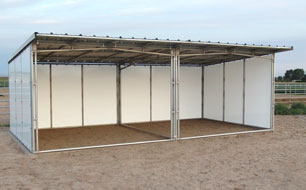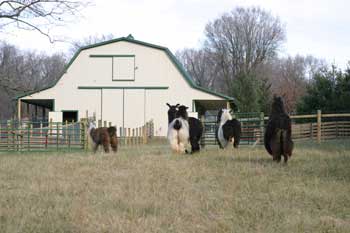Most common is the four foot high woven wire cattle fence. While adequate in many situations, this fencing is not impenetrable to predators, who can dig under or climb/jump over the fence. Llamas can also jump a four to five foot tall fence, although they usually won’t unless being pursued, or while trying to reach a companion, or even just to get to better grazing (the grass is always greener….) An electric wire run low to the ground around the outside can help in preventing dogs from digging under the fence. Stud males may required more substantial or taller fencing, as they are more tempted to jump to reach females or “climb” the fence to display to other males.New-Zealand style high-tensile fencing is an economical, attractive, long-lasting fence. However, it needs to be electrified to resist predators. If a llama reaches through or tries to jump the electric wire and becomes entangled, death will almost certainly result from disruption of the electrical path in the heart. Therefore, use of this type of fencing should be carefully considered.
Special care should be taken when separating mothers from their babies during weaning. The baby may do everything within its power to jump, crawl around, under, or through any fencing to return to its mother, with potentially deadly results.
Remember that no fence is completely predator-proof; as can be sadly attested to by many llama owners who have lost llamas to roaming dogs, and even neighbor’s pet dogs.


